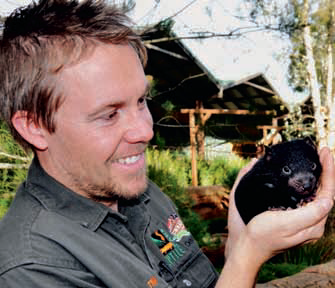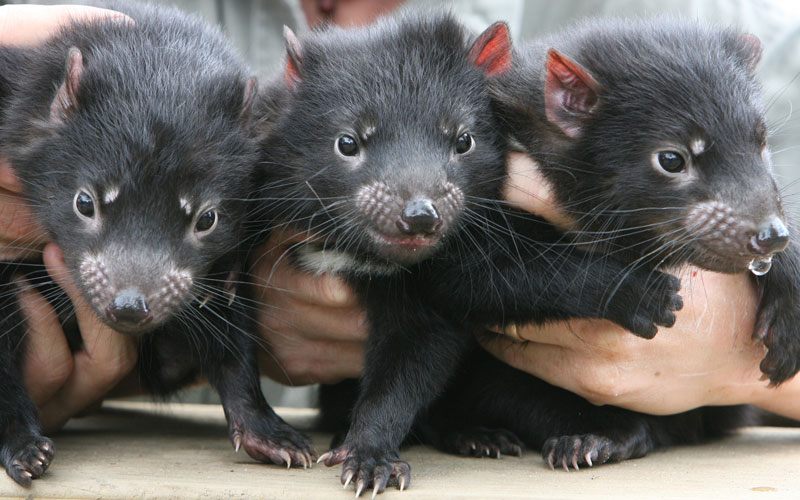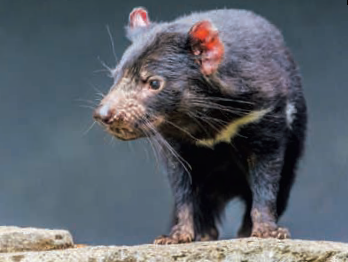After many people failed to breed the Tasmanian Devil in captivity, Tim Faulkner and the team at Devil Ark persevered. Lauren McKellar reports.
The Tasmanian Devil is a carnivorous marsupial at the centre of much intrigue. This iconic symbol of our southern state was once widespread, but in recent years has had its population threatened due to a nasty disease that quickly spiralled out of control.
When an amateur photographer discovered Devil Facial Tumour Disease back in 1996, the future for this small black and white carnivorous marsupial looked bleak. The cancer attacked the animal, which grows to roughly the size of a small dog, drastically reducing population numbers. In fact, in 2008 the Tasmanian Devil was declared to be endangered, sending it along a path that seems startlingly similar to that of its larger relative, the Tasmanian Tiger.
Thankfully, unlike the Tasmanian Tiger tragedy, various groups and individuals have been looking out for the Tasmanian Devil’s survival for several years. “In 2003, the Tasmanian authorities knew they had a problem,” says Tim Faulkner, operations manager at the Australian Reptile Park and CEO of Devil Ark. “Devil facial tumour disease was contagious and spreading rapidly.” This problem was discussed by several zoos and organisations on the mainland of Australia, with one thing becoming clear: an insurance population was needed to help ensure the species’ survival.

Photo courtesy of Devil Ark
Ark-Angels
Despite these challenges, there’s no denying that Devil Ark is doing incredibly well. Part of the reason for this success can be attributed to the Devils’ enclosure and similarity of the terrain to their natural habitat, but credit must also go to the people behind the project.
“Everyone loves their animals, but we’ve had really strong continuity of staff, whereas in some other groups they might turn over more quickly,” Tim says. Speaking to this crusader, it’s very clear just how passionate he and the team are about the Tasmanian Devil, and with Tim listing the creatures bred in their program as some of the happiest Devils on earth, it’s clear that the feeling is mutual.
How can I help?
To help Devil Ark, visit the website at devilark.org.au and donate or learn more about this fabulous project.
Did you want to read the whole article on Tasmanian Devils? You should have read PETS issue 58. Subscribe to our magazine here so you don’t miss out on any more animal stories.



Leave a Reply